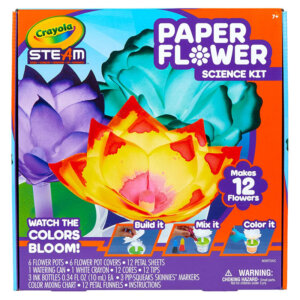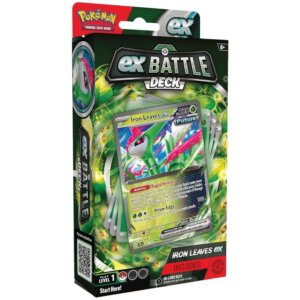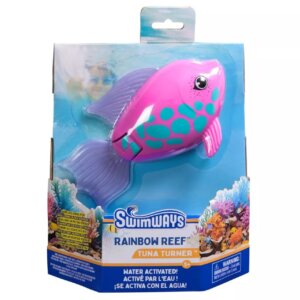STEAM Paper Flower Science Kit Review
Share!
Editor's Review
Make a colorful bouquet of paper flowers while also learning about science with the Crayola STEAM Paper Flower Science Kit. The goal of this hands-on educational toy is to let kids learn about the science of water “wicking” as they create colorful paper flowers. The kit includes everything needed to make 12 paper flowers, and even once you’ve used all the petal sheets, you can still reuse the kit with white coffee filters.
To get started, you take a flower pot and press a cover into it. Then, insert a core into the bottom of a petal funnel. Carefully punch out four petals from a petal sheet, arrange them from smallest to largest, and insert a tip through the holes. Then press the tip and the petals into the funnel. Push your paper flower down through the cover so the core is about a quarter inch from the bottom of the pot. Now take the three inks and squeeze a total of 20 drops through the cover’s hole. You can stick with just one color or use the color guide to mix colors and make new ones. Fill the watering can with water, and watch the color travel up the core and into the flower petals. The color starts traveling up the core pretty much as soon as you start pouring the water, and then it slowly spreads to the petals.
You can continue to make more paper flowers in the same way, or you can experiment by first drawing designs on the petals with the white crayon or the markers. The instructions also suggest adding red ink and water, waiting 15 minutes and then adding blue ink to see what happens. There is a science chart on the back of the instructions where kids can write down the colors they used and the results of each experiment.
Price Check
Should I get it?
This is a fun and easy science activity and craft, and kids will think it’s so cool to watch the color travel from the flower pot to the paper petals. We like that kids can get creative with the color mixing and that there are additional experiments to try. However, we do wish there was more explanation of the science behind the wicking process.









